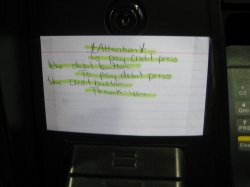EFTPOS debit card difference
 “Credit of debit?” It’s all very confusing for American shoppers. But the news about a massive point-of-sale data theft at Target makes one thing very, very clear: Always choose “credit” when possible!
“Credit of debit?” It’s all very confusing for American shoppers. But the news about a massive point-of-sale data theft at Target makes one thing very, very clear: Always choose “credit” when possible!
Note: This article is about the American financial system. Other systems in other countries are very, very different.
Credit and Debit
The American financial services industry has changed radically since Bank of America sent unsolicited Visa cards to 60, 000 residents of Fresno in 1958. But the most radical change was the introduction of debit “check cards” in the 1980’s. Since then, merchants have been pushing customers to choose debit at the register, avoiding credit card transaction fees and pocketing the difference.
Let me explain the difference between credit and debit cards first:
- Credit transactions pass from the point of sale terminal (“cash register”) through a transaction network to the issuing bank. There, the transaction is added to a customer’s bill, which they (hopefully) pay at the end of the month. There are a few important elements I should mention here:
- These transactions are Credit – that is, the bank pays the merchant and bills the customer later
- The credit card association (Visa, American Express, etc) and issuing bank (Chase, Bank of America, etc) withhold a fee of up to 5% on each transaction
- Lots of people don’t pay their bills on time, dispute charges, and otherwise leave the banks holding the bag, and everyone gets ripped off by the companies in return, typically paying over 20% interest
- In case of fraud, US law limits customer liability to just $50, and many cards offer 100% fraud coverage
- Debit transactions go directly from the point of sale terminal (“cash register”) through a transaction network to the customer’s bank account. The money is immediately removed from the account at the time of sale.
- These transactions are debits – the customer pays the merchant
- Fees for debit card transactions are much lower, dramatically increasing profit margin for merchants
- Although debit fraud is widespread, consumers have responsibility to monitor and report fraud or banks and networks are off the hook; the length of time and amount of protection varies
Debit Cards That Look Like Credit Cards
The situation got much more complicated in the last decade as debit cards began appearing with Visa, MasterCard, and American Express logos. These are still debit cards, but they function slightly differently than before. Transactions can now pass through the traditional PIN debit system (EFTPOS) or the credit card network.





